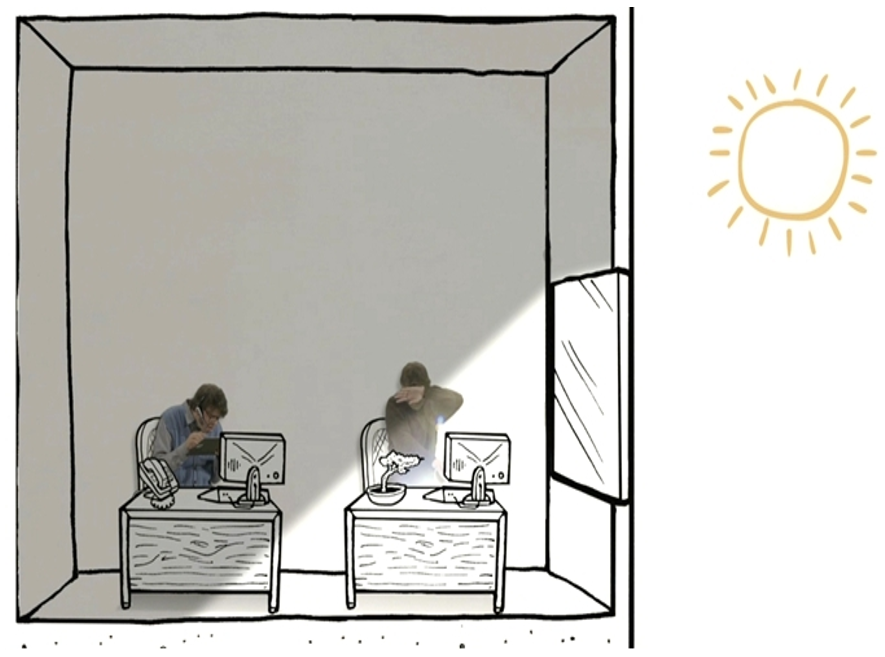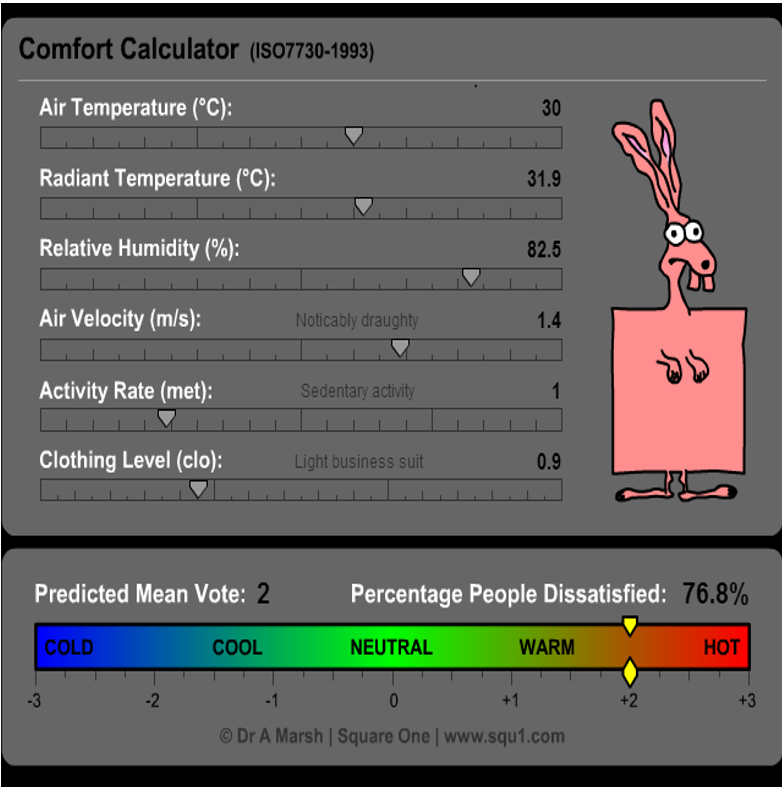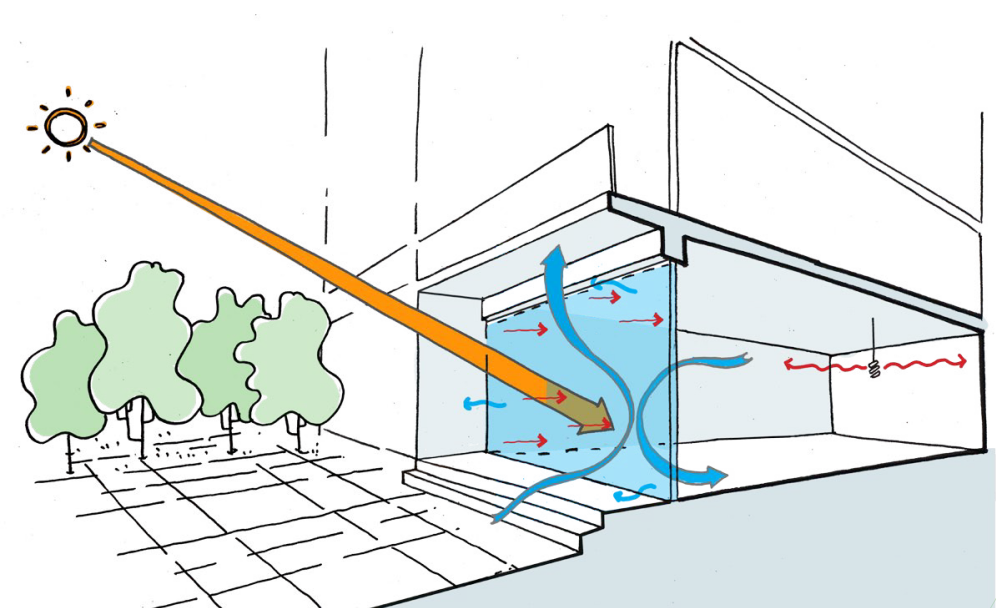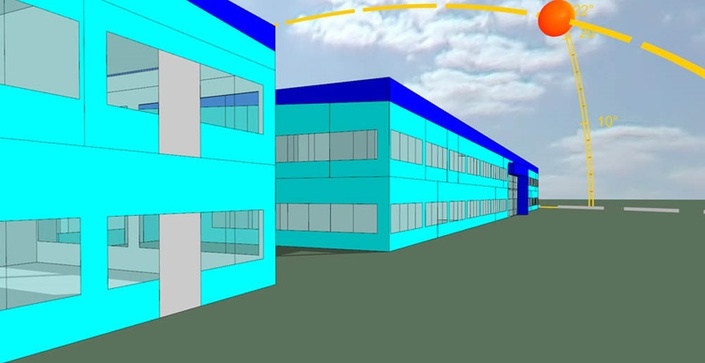RESOURCES
Learn more about light distribution and glare

In order to provide proper viewing comfort, the light must not only be bright enough, but also evenly distributed, or avoid creating glare for the occupants. EDEEC has performed luminance measurements for many buildings and can provide appropriate advice to reduce this phenomenon.
First, let’s find out what glare is.
Putting high brightness areas next to low brightness areas will cause glare and discomfort.
An incandescent light bulb on a table, for instance, can produce more light than necessary. However, it can produce more light that hits the eyes directly than the light reflected off the surface, making it difficult to read or perform other tasks. The lamp shade will help keep the glare out of your eyes while still shining on the tabletop.

Glare is extremely critical and should be controlled when using natural lighting because direct sunlight is very bright.

Light from light bulbs or the sun without covering can cause glare. Lighting devices have the function of distributing and diffusing light, avoiding glare.
Brightness level and luminance factor
Luminance is difficult to measure because it is subjective and influenced by several factors (including a person’s age). However, the base standard for evaluating luminance is the intensity of light in a person’s field of view at a given viewing position (cd/m2). This is the amount of light reflected from a surface into the observer’s eye.
Some rules of experience:
Avoid contrasts greater than 10:1 when working.
Avoid lighting with a 2,000 lux or greater brightness because most computer monitors are 200 lux and you want to keep within 10 degrees of the screen’s brightness.
20:1 contrast means occupants will only see shadows. This is acceptable for corridor areas.
Contrast 50:1 will be annoying so it should be avoided.
In natural lighting analysis, glare can also be assessed using fisheye holes at head height. Several agile engineering methods such as Unified Glare Rating (UGR) and Daylight Glare Probability (DGP), have also been developed. The higher the DGP, the more susceptible we are to glare.

Fisheye hole at a glare research center. Using an HDR camera, the overlapping of false colors of the light determines the value of the image and the Radiance analysis under the same conditions.






